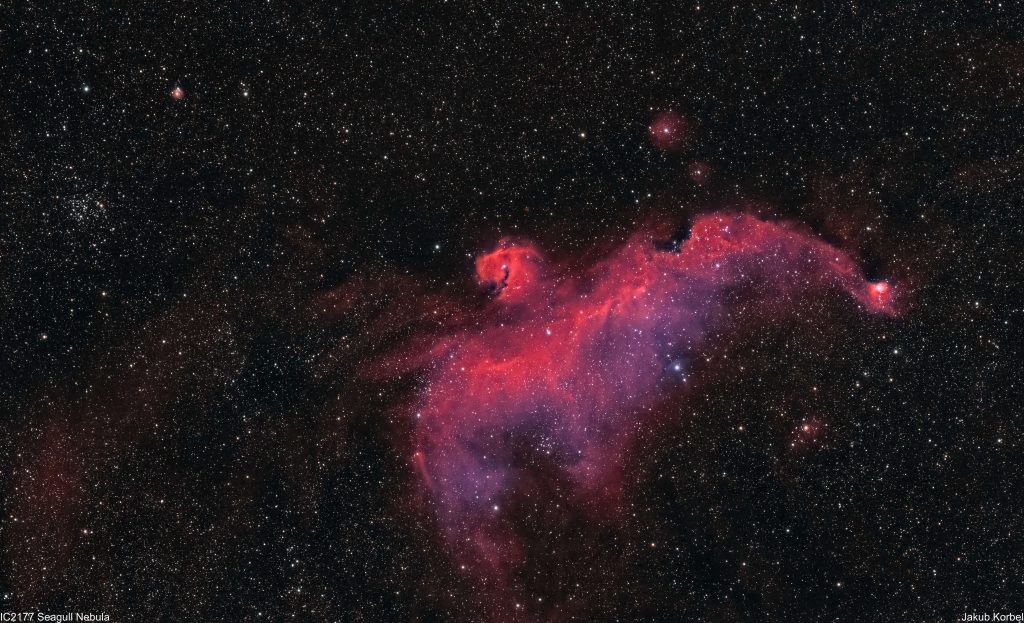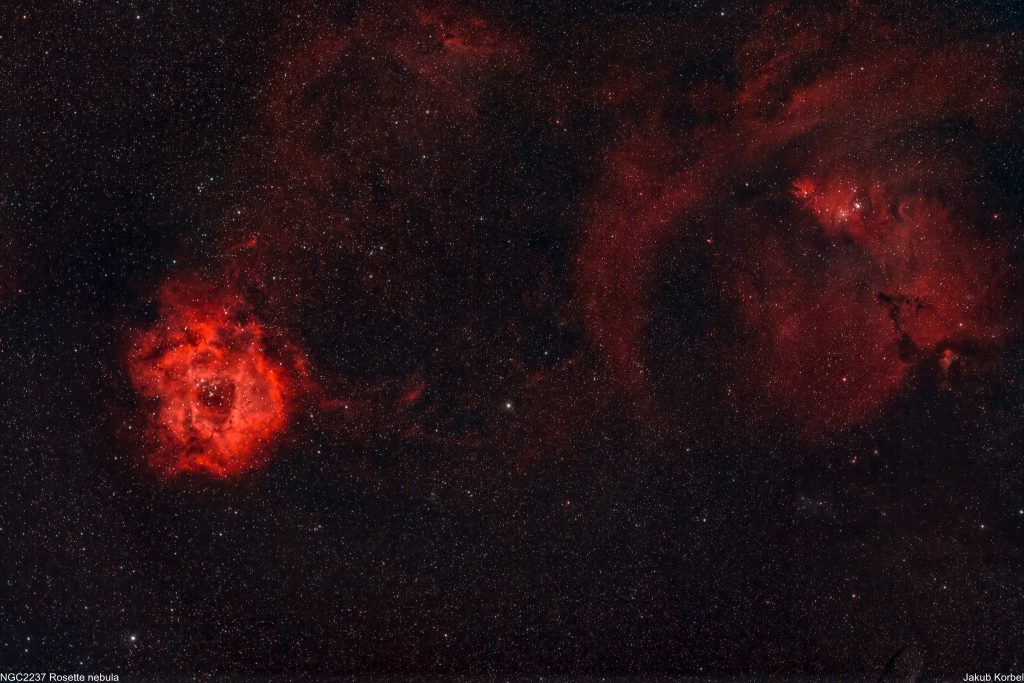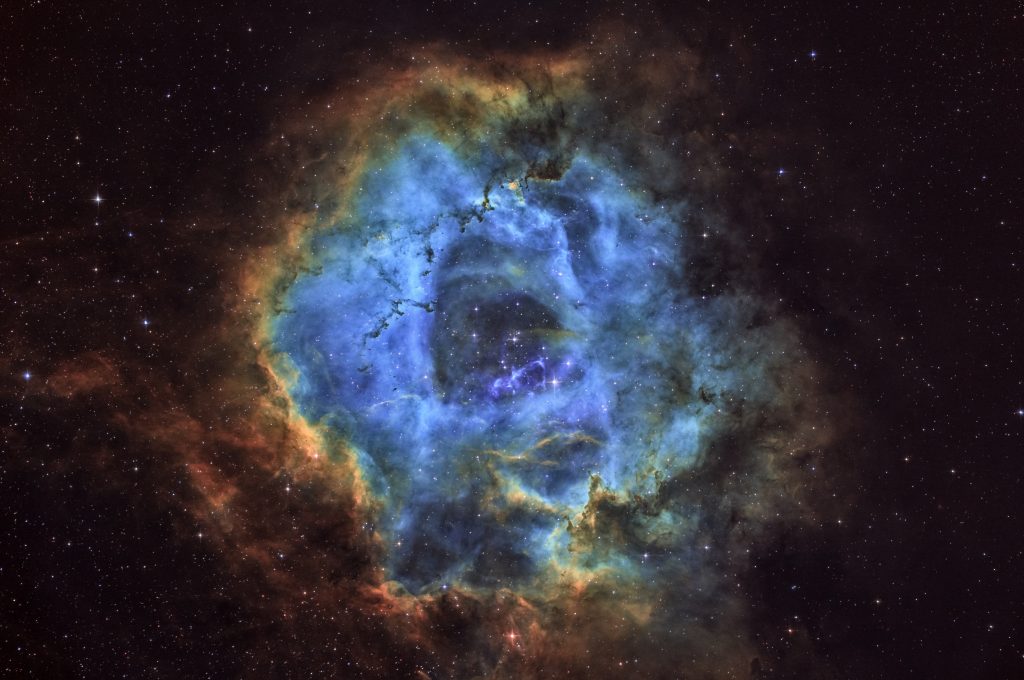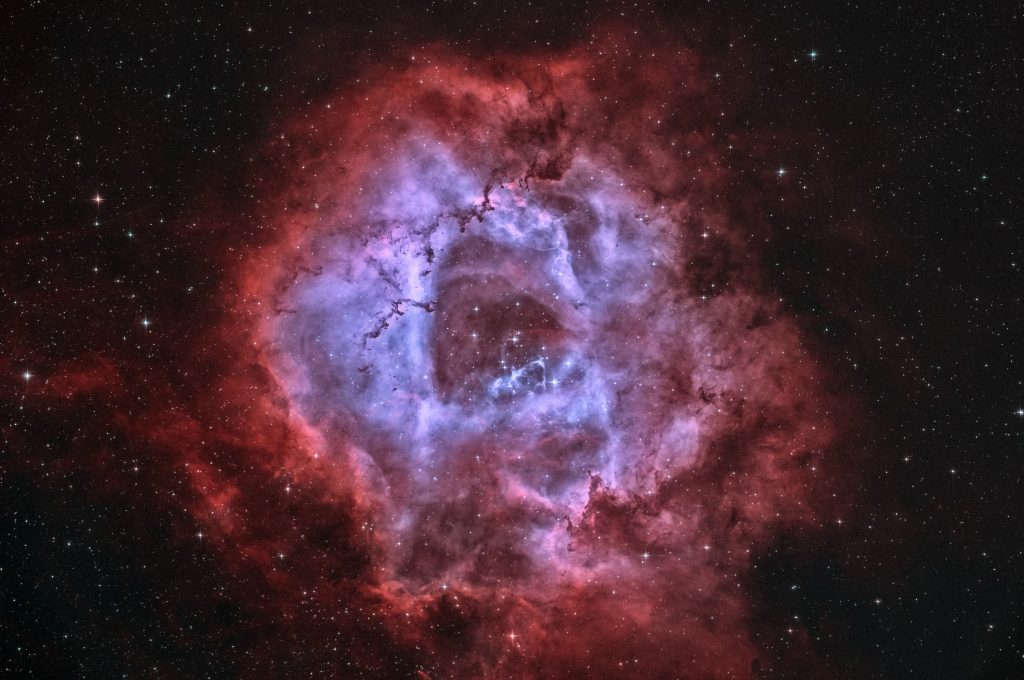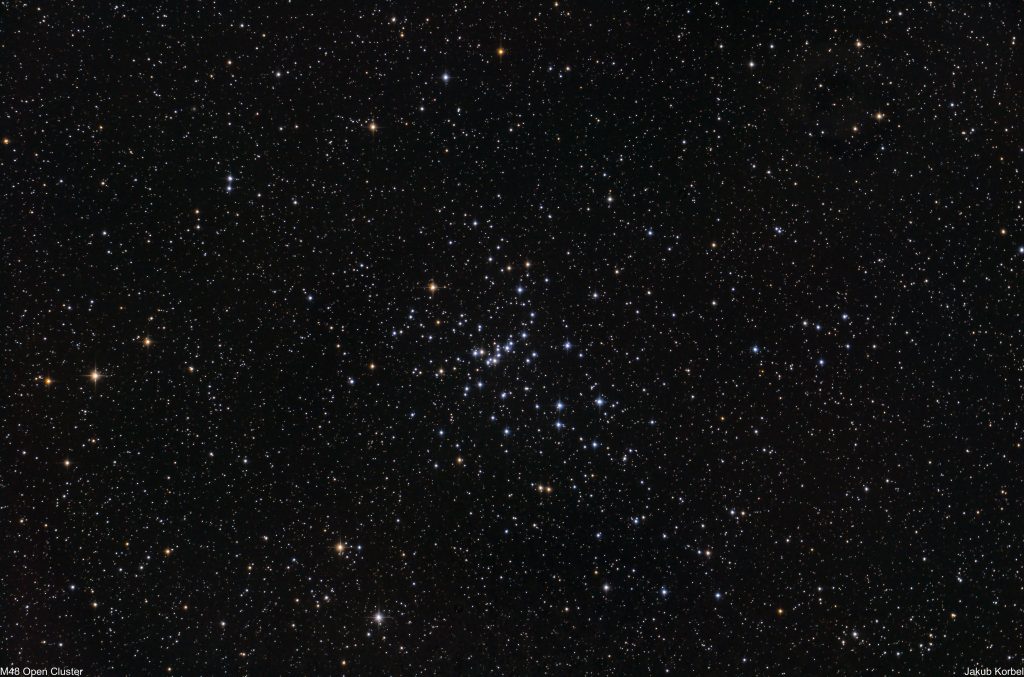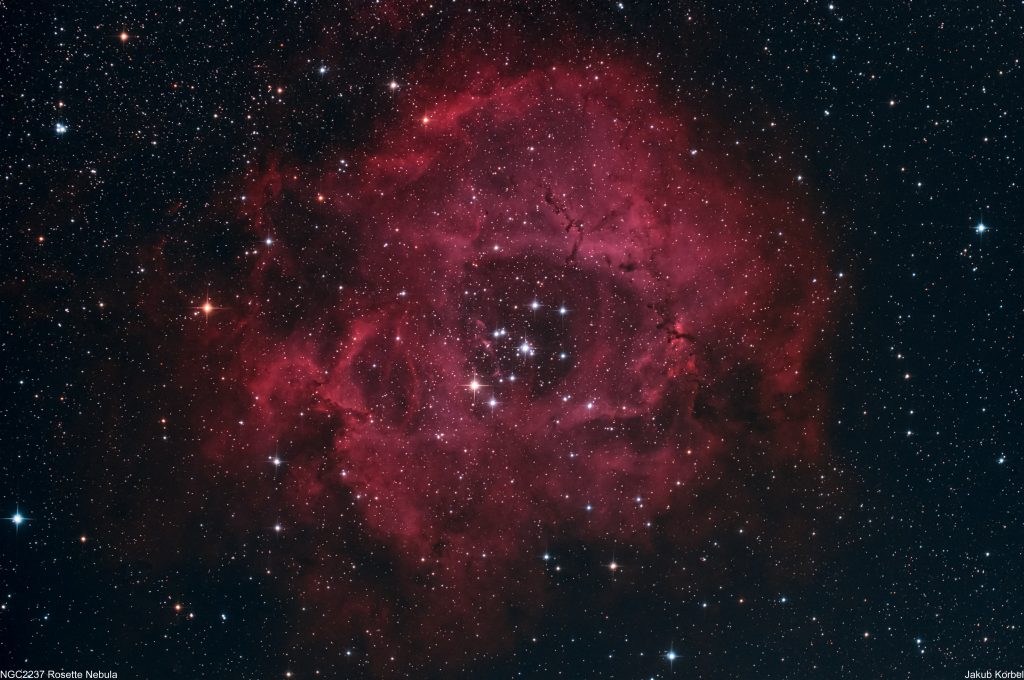The Cone Nebula is a molecular cloud of excited hydrogen gas, located in the constellation Monoceros. It belongs to the group of nebulae, which can be observed/photographed during the winter in the northern hemisphere. I tried to capture this object a long time ago without success. I must say, it’s a very difficult one, so I attempted this time with new equipment. Specifically new extra, super, mega narrowband filters, having a bandwidth of only 3 nm. Combined with a small 6″ Newtonian telescope I was able to generate a pretty decent picture.
Here is a fake Hubble palette edit:
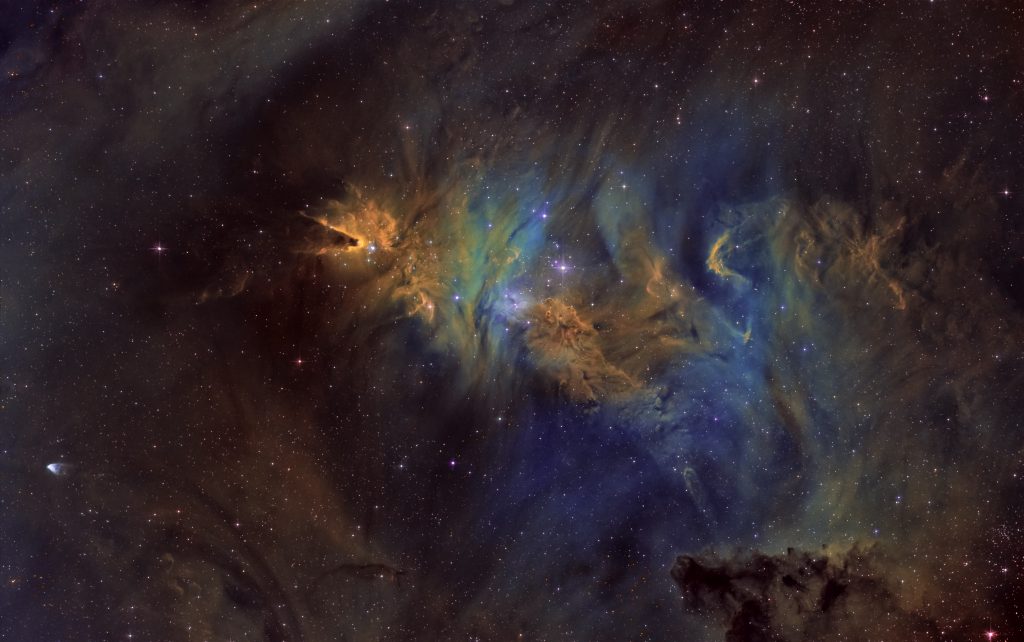
And here is a more natural-looking bi-color edit:
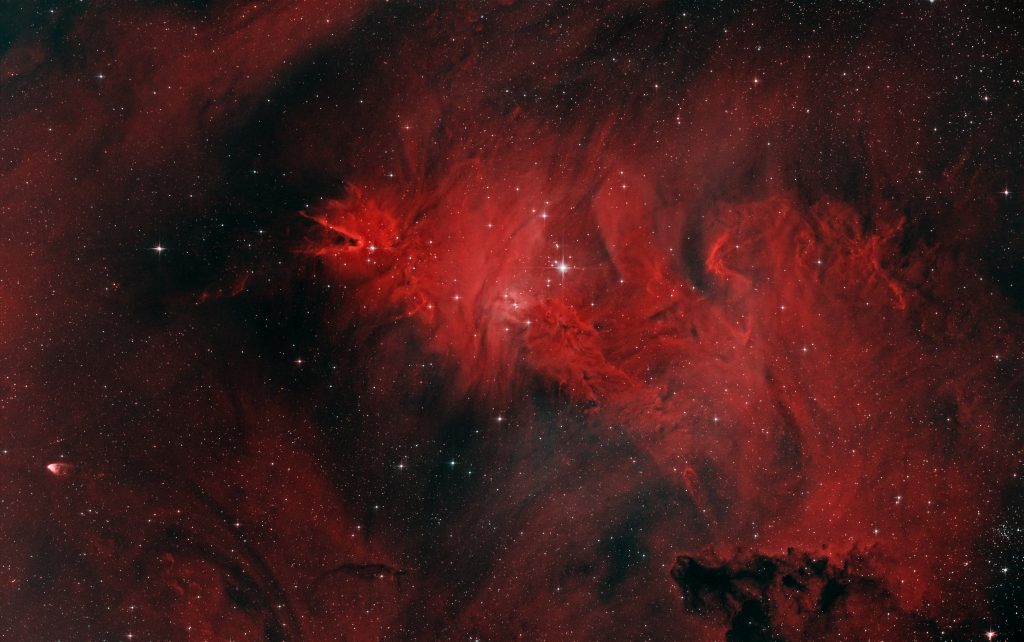
| Telescope | Newton 150/600 mm |
| Aperture | 150 mm |
| Focal length | 570 mm |
| Mount | Rainbow Astro RST 135 |
| Autoguiding | ZWO 174MM, QHY Mini Guide Scope |
| Camera | ZWO 2600MM @-10°C |
| Corrector | MaxField coma corrector |
| Filters | Antlia Ha, OIII, SII 3 nm |
| Exposure | 142x300s, Gain 100, bin 1x1, |
| Date | 2022-03-09 |

